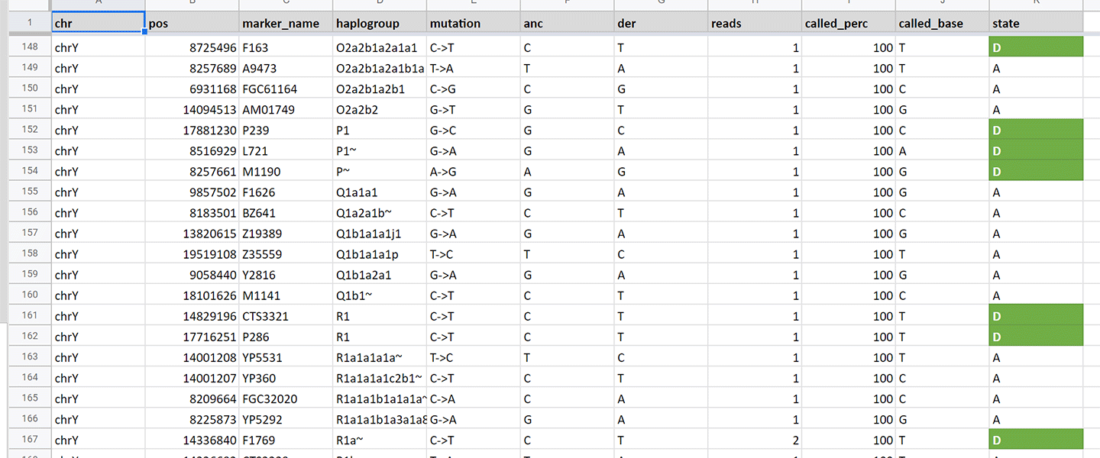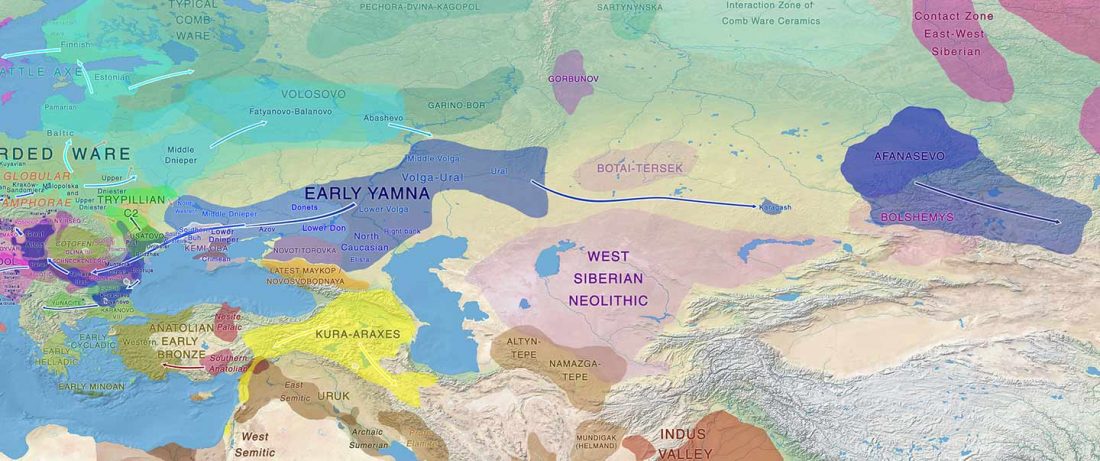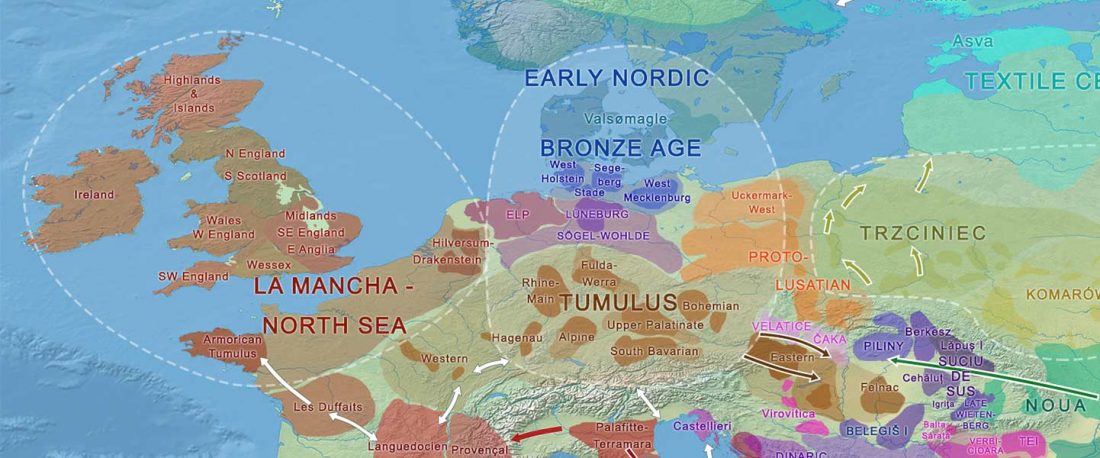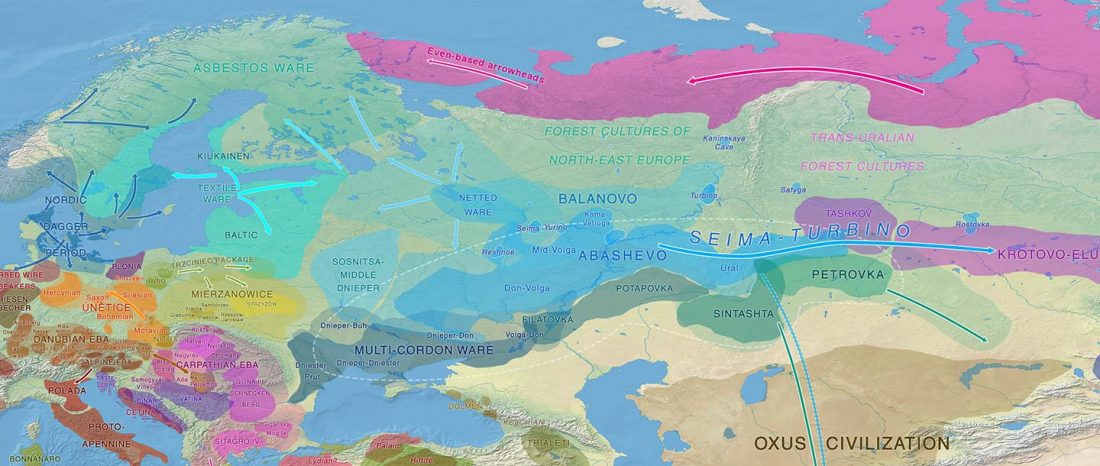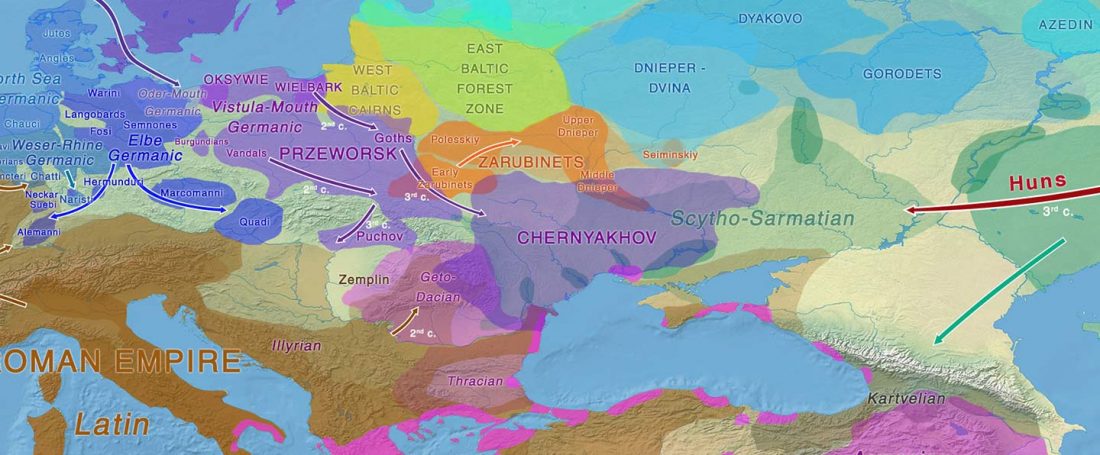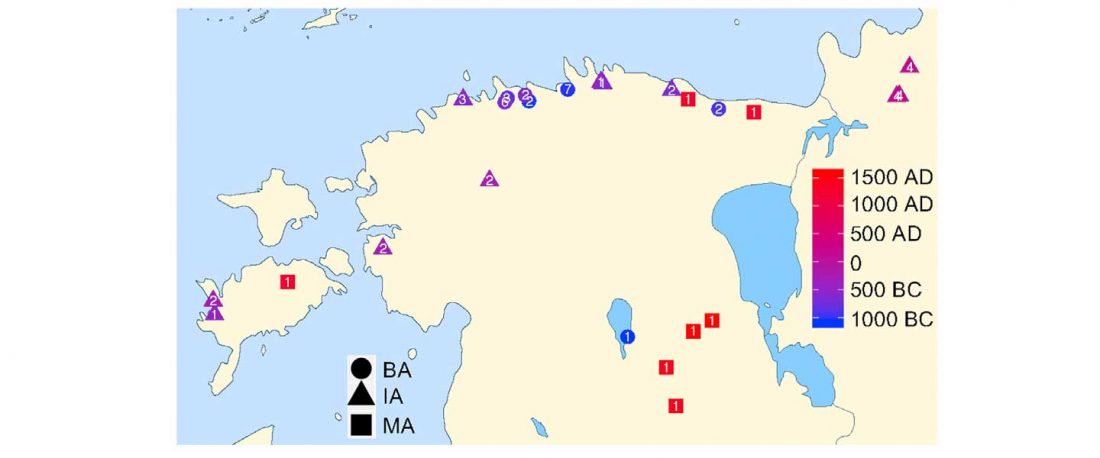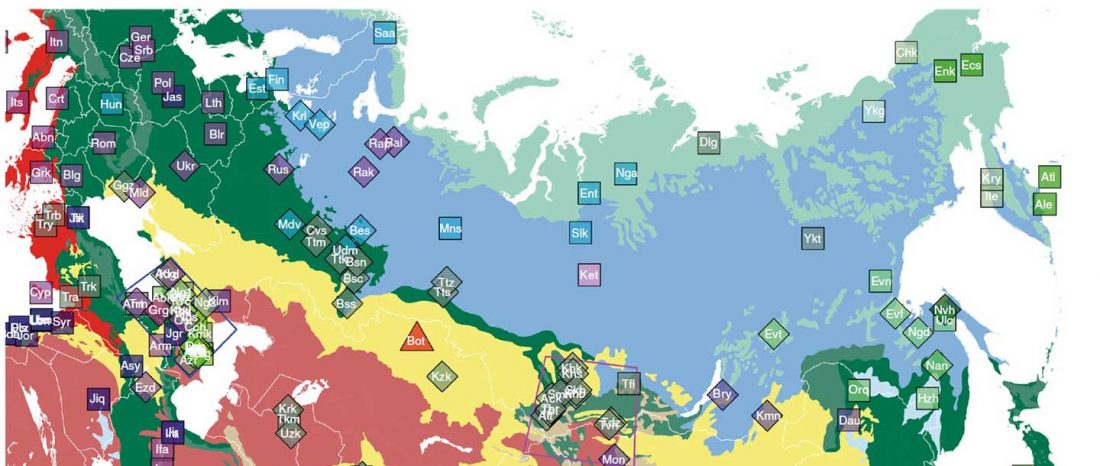This page hosts analyses of ancient human Y-chromosomal haplogroup inference from next generation sequencing data, performed with software YLeaf v.2. For information on data and interpretation, refer to the manual at Erasmus MC Resources.
As a quick reference on data interpretation, please read papers on ancient DNA damage, such as Dabney, Meyer, and Pääbo (2013), for information of which derivative (and ancestral) SNP calls may be wrong.
For the most recent automated Y-SNP calls obtained with Yleaf v.2.3 or later over FASTQ files, including discussion of individual samples, see:
These are recent … Read the rest “Ancient Y-DNA haplogroups”
The latest papers from Ning et al. Cell (2019) and Anthony JIES (2019) have offered some interesting new data, supporting once more what could be inferred since 2015, and what was evident in population genomics since 2017: that Proto-Indo-Europeans expanded under R1b bottlenecks, and that the so-called “Steppe ancestry” referred to two different components, one – Yamnaya or Steppe_EMBA ancestry – expanding with Proto-Indo-Europeans, and the other one – Corded Ware or Steppe_MLBA ancestry – expanding with Uralic speakers.
The following maps are based on formal stats published in the papers and supplementary materials from 2015 until today, mainly on … Read the rest “Yamnaya ancestry: mapping the Proto-Indo-European expansions”
New paper (behind paywall) by David Anthony, Archaeology, Genetics, and Language in the Steppes: A Comment on Bomhard, complementing in a favourable way Bomhard’s Caucasian substrate hypothesis in the current issue of the JIES.
NOTE. I have tried to access this issue for some days, but it’s just not indexed in my university library online service (ProQuest) yet. This particular paper is on Academia.edu, though, as are Bomhard’s papers on this issue in his site.
Interesting excerpts (emphasis mine):
Along the banks of the lower Volga many excavated hunting-fishing camp sites are dated 6200-4500 BC. They
…
Read the rest “Volga Basin R1b-rich Proto-Indo-Europeans of (Pre-)Yamnaya ancestry”
The nature of the prehistoric languages of the British Isles is particularly difficult to address: because of the lack of ancient data from certain territories; because of the traditional interpretation of Old European names simply as “Celtic”; and because Vennemann’s re-labelling of the Old European hydrotoponymy as non-Indo-European has helped distract the focus away from the real non-Indo-European substrate on the islands.
Alteuropäisch and Celtic
An interesting summary of hydronymy in the British Isles was already offered long ago, in British and European River-Names, by Kitson, Transactions of the Philological Society (1996) 94(2):73-118. In it, he discusses, among others:… Read the rest “European hydrotoponymy (VI): the British Isles and non-Indo-Europeans”
In his recent paper on Late Proto-Indo-European migrations, when citing Udolph to support his model, Frederik Kortlandt failed to mention that the Old European hydrotoponymy in northern Central-East Europe evolved into Baltic and Slavic layers, and both take part in some Northern European (i.e. Germanic – Balto-Slavic) commonalities.
Proto-Slavic
From Expansion slavischer Stämme aus namenkundlicher und bodenkundlicher sicht, by Udolph, Onomastica (2016), translated into English (emphasis mine):
NOTE. An archived version is available here. The DOI references for Onomastica do not work.
(…) there is a clear center of Slavic names in the area north of the
…
Read the rest “European hydrotoponymy (IV): tug of war between Balto-Slavic and West Uralic”
The recent study of Estonian Late Bronze Age/Iron Age samples has shown, as expected, large genetic continuity of Corded Ware populations in the East Baltic area, where West Uralic is known to have been spoken since at least the Early Bronze Age.
The most interesting news was that, unexpectedly for many, the impact of “Siberian ancestry” (whatever that actually means) was small, slow, and gradual, with slight increases found up to the Middle Ages, compatible with multiple contact events in north-eastern Europe. Haplogroup N became prevalent among Finnic populations only through late bottlenecks, as research of modern … Read the rest “Genetic continuity among Uralic-speaking cultures in north-eastern Europe”
A recently published abstract for an upcoming chapter about Early Slavs shows the generalized view among modern researchers that Common Slavs did not spread explosively from the east, an idea proper of 19th-century Romantic views about ancestral tribes of pure peoples showing continuity since time immemorial.
Migrations and language shifts as components of the Slavic spread, by Lindstedt and Salmela, In: Language contact and the early Slavs, Eds. Tomáš Klír, Vít Boček, Universitätsverlag Winter (2019):
The rapid spread of the Proto-Slavic language in the second half of the first millennium CE was long explained by the … Read the rest ““Dinaric I2a” and the expansion of Common Slavs from East-Central Europe”
Open access The Arrival of Siberian Ancestry Connecting the Eastern Baltic to Uralic Speakers further East, by Saag et al. Current Biology (2019).
Interesting excerpts:
In this study, we present new genomic data from Estonian Late Bronze Age stone-cist graves (1200–400 BC) (EstBA) and Pre-Roman Iron Age tarand cemeteries (800/500 BC–50 AD) (EstIA). The cultural background of stone-cist graves indicates strong connections both to the west and the east [20, 21]. The Iron Age (IA) tarands have been proposed to mirror “houses of the dead” found among Uralic peoples of the Volga-Kama region [22].
(…) The 33 individuals included
…
Read the rest “Baltic Finns in the Bronze Age, of hg. R1a-Z283 and Corded Ware ancestry”
The preprint by Jeong et al. (2018) has been published: The genetic history of admixture across inner Eurasia Nature Ecol. Evol. (2019).
Interesting excerpts, referring mainly to Uralic peoples (emphasis mine):
A model-based clustering analysis using ADMIXTURE shows a similar pattern (Fig. 2b and Supplementary Fig. 3). Overall, the proportions of ancestry components associated with Eastern or Western Eurasians are well correlated with longitude in inner Eurasians (Fig. 3). Notable outliers include known historical migrants such as Kalmyks, Nogais and Dungans. The Uralic- and Yeniseian-speaking populations, as well as Russians from multiple locations, derive most of their Eastern Eurasian ancestry
…
Read the rest “Uralic speakers formed clines of Corded Ware ancestry with WHG:ANE populations”
